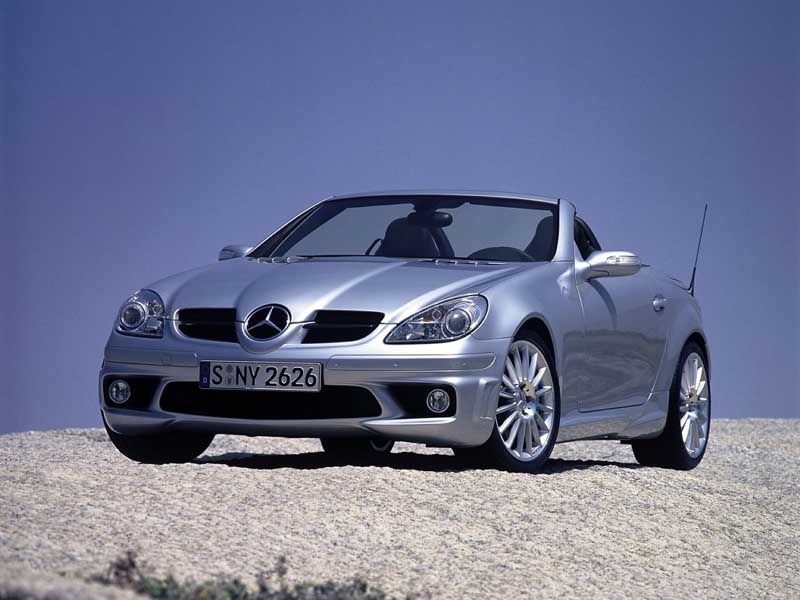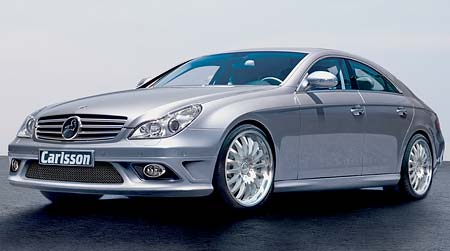
Paeng Bartolome (aka Rafe Bartholomew) blogs at Manila Vanilla and has written a book on Philippine basketball, to be published in June.
When I was growing up in early 1990s New York, I thought everyone played ball. Shammgod, Ron-Ron and Steph were still in high school, and back then all we could talk about was their handles, not—as they moved on to college and the pros—how coaches should handle them. Of course, hoops didn't actually hold the entire city in its grasp, but it felt that way. I wore Olaf's shorts under my jeans every day in ninth grade; everyone I knew played ball, and anyone who didn't play I had no reason to know.
Alas, I grew up. I had to go to college, get a job, widen my frame of reference to acronyms beyond the PSAL, NAIA, NCAA and NBA. The sport was no longer my life, just a part of it. That's pretty typical for most kids who possessed some talent but nothing special and had to figure out plan B. Still, I missed the feeling of being surrounded by the game, of living in a place where everyone seemed to have a connection to basketball. A year after I finished school, I was lucky enough to find that place again, but I had to travel 8,000 miles to get there—the Philippines.
I had an idea of what I might find there. A few scenes of Filipinos committing out-of-this world acts of hoops devotion in Alexander Wolff's Big Game, Small World tipped me off, but nothing could prepare me for the depth and richness of the Philippines' basketball culture. The first time I stepped off an airplane in Manila, I saw passengers boxing out for front-row spots around the baggage carousel. At first I dismissed it as a hopeful mirage whipped up by researcher bias, but then I saw one passenger attempt to backstroke the person in front of him out of the way. He slid his hand under the other guy's armpit and pretended to yawn while raising his arm and pushing the other traveler behind him. It almost worked, but the guy in front kept his outside foot in front of the stroker's and denied the ensuing attempt to step through. Their technique was too pure. It was undeniable—basketball had seeped into the most mundane acts of everyday Philippine life.
Let's compress the messy and not-particularly-pretty history of U.S. colonial rule in the Philippines, not because it's unimportant but because it's difficult to explain in a paragraph, and I'm trying to stay focused on basketball. The vital fact, as far as the sport is concerned, is that Americans brought basketball to the Philippines in 1911, just twenty years after Naismith hung a peach basket on a wall in Springfield. Filipinos were probably the first people after Americans to play the sport seriously, and by the 1930s college and commercial leagues had become first-rate entertainment in Manila, events where society types fanned themselves in courtside seats and everyday fans dangled their feet from the rafters.
The conventional wisdom regarding Philippine basketball is that it is just like the American game, only the players are six inches shorter at every position. Blame the long shadow of colonial history for this misconception. American influence has been overstated by foreign writers who stayed a week in Manila, noticed that Filipino guards had more shake than their counterparts elsewhere in Asia, and credited Uncle Sam. Filipino columnists have been equally guilty of spreading the lie, often as part of a rhetorical argument (that has little to do with reality on the court) against U.S. influence on Philippine national affairs. The truth is that basketball has been a marquee sport in the Philippines for the better part of a century, time enough for the game to develop on its own, spinning off new styles like successful mutations, and evolving into something uniquely Filipino.
That ought to be enough context. Now, with some help from YouTube, here are five terms to describe the basics of the Philippine game.
•Umupo sa ere – translation: To sit in the air. Most Filipino players lack the height to pull off SportsCenter-worthy dunks. They don't, however, lack hops. Slashers in the PBA, Manila's professional league (also the second-oldest in the world, after Boss Stern's Association), have substituted the circus layup for the dunk as the ultimate expression of basketball artistry. Shots that look like once-in-a-lifetime lucky chucks are actually taken by design. Well, not exactly design, because for players like Samboy “Skywalker” Lim, the subject of two lengthy tribute videos (first above), the plan is to get into the lane and into the air. After that, there is no plan, other than to “sit in the air,” spinning and twisting, pumping and clutching until a chance to shoot materializes. In the American game, mid-air improvisation more often seems like a last resort, a flash of brilliance made necessary by a challenge, like Vince Carter's last-second squirm to dunk over and around Anderson Varejao on Sunday; it's more of a strategy for Filipino scorers, who will look to break down their opponents in the air, rather than on the ground. Samboy may have the longest highlight reels with the most sublime musical accompaniments—Yanni and Kenny Loggins—but he is certainly not the only player to master these hoops flights of fancy; Vergel “The Aerial Voyager” Meneses and Bong “Mr. Excitement” Alvarez, helped Lim perfect the art in 1990s, and guards like Cyrus Baguio and Arwind Santos keep it alive today.
•Pektos – translation: spin. If you're going to jump before deciding how to finish the play, you better be able to score from all angles and from an array of release points. To that end, PBA scorers like Lim and his modern day forebears James Yap and Willie Miller, combine spin and touch with scoops and finger rolls to bank shots like they were born with a Spalding in one hand and a protractor in the other. They may have grown up speaking tongues like Tagalog, Cebuano, and Ilonggo, but their use of shot-making English could leave H.L. Mencken at a loss for words. Spin is such a necessary part of the Philippine game that when large numbers of Filipino-Americans started coming back to play in the Nineties, guys from Cali received earnest instructions to imagine they were unscrewing a lightbulb while shooting layups.
The emphasis on pektos is due in part to the Philippine penchant for improvisation, but it also has to do with the lack of standardization in basketball courts and training techniques around the country. The Philippines is a poor nation, and although a startling amount of public money has been spent on constructing cement courts with roofs, overhead lights and fiberglass backboards, thousands more jerry-rigged hoops pepper the nation, built by people who decided to make do with a flat patch of earth and a rusted car hood lashed to a coconut tree. Countless Philippine pros learned the game in ad hoc style on homemade courts, mimicking their uncles' moves and trying out their own shots. These guys had little exposure to proper hardwood or knowledgeable coaching until high school or sometimes college. Of course, they eventually learned textbook basketball, but by then their self-taught skills couldn't be unlearned. Thus, almost every player possesses his own, abnormal genius—unteachable shots born of the extra-wide gaps between the two-by-fours that passed for a backyard backboard or a piece of rebar bent into a too-small rim.
•Gulang – translation: craftiness. This word is actually the root of the Tagalog term for parents, a neat double-entendre that emphasizes the built-in respect for experience in Philippine culture and, by extension, basketball. A player who has been around long enough to master the sport's dirty tricks has earned the right to take advantage of younger opponents. These dark arts include the holding and pushing that occurs on courts across the globe, but a special appreciation is reserved for sneakiness. You'll almost never see these acts caught on camera, but a few afternoons on Philippine playgrounds or a night of drinking with one of the PBA's retired defensive specialists will reveal a litany of basketball deceits. My favorite is hand- or finger-holding. Set a high screen in the Philippines, and chances are when you try to roll you won't be going very far. Ditto for when you get ready to jump for a rebound and find yourself tethered to the ground. What happened? Someone latched onto your index finger and tugged just enough to kill your momentum. You've been made a victim of gulang, which, in English, would be kind of like saying you got sonned.
•Ginebra – This isn't a term, it's a team, which is named after a brand of gin. It's also something of a movement, the runaway most popular team in the Philippines (although recent surveys suggest this title is not so clear-cut) that is synonymous with never-say-die basketball and its most famous practitioner, Robert Jaworski. This hoops Methuselah might have played to the death if being elected to the Senate in 1998 hadn't forced him to vacate his role as Ginebra's player/coach at the tender age of 52. When Jaworski was with Ginebra, the crowd was so notorious for showering the court with peso coins and AA batteries that opposing teams kept beach umbrellas under the bench and opened them up for protection from the inevitable fusillades. Nowadays, that frothy fandom is mostly channeled into chanting “Hee-neh-brah!” loud enough to shake the 15,000-seat Araneta Coliseum. That devotion also shows up in comically intense YouTube tributes like the “Princes of the Universe” video. If you can get over the words “I AM IMMORTAL” scrolling across the bottom of the screen when Jaworski appears, you'll see some splendid footage of one of the PBA's most exciting teams of the Nineties.
You may also notice Noli Locsin (6), the archetypical Philippine undersized power forward. That is, a 6-foot-3 bruiser who moves like Baryshnikov. Enough bulky fours – Nelson Asaytono, Alvin Patrimonio, Ali Peek—have combined agility and beefiness to make the miraculous blend seem fairly unremarkable, but none so dramatically as “The Tank” Locsin, who looked like he ate a kilo of rice at every meal and hung in the lane like he was riding Aladdin's carpet.
•Larong buko – translation: coconut game. The opening clip in this countdown is a reminder that the Philippine game embraces a healthy amount of silliness. These loose ball carnivals are common and popular enough to have earned the colloquialism larong buko, which suggests the players are handling the ball so poorly it might as well be a coconut. Aside from the surprising frequency of such moments at the professional level, it's worth noting that these are often the crowds' favorite parts of games. Fans will reward ten seconds of the ball squirting around like a greased pig and the players diving and sliding in pursuit with a few minutes of standing ovation. It goes back to the participatory nature of Philippine basketball—Filipino fans don't just admire the game, they play it, and nothing seems to please them more than the free-wheeling, frenetic, occasionally sloppy style of ball that they practice on their own neighborhood courts.
Watching these videos, someone might conclude that Samboy's virtuoso finishes and Noli's round mound act are cute novelties, but that these players can only pull off their moves because there are no shot-blockers in the PBA. They're probably right—the PBA game is played, by and large, below the rim, and if you dropped Josh Smith into these games he'd gobble shots like Pacman. So what? A country's basketball style develops according to the physical constraints and cultural intangibles that—in criminally general terms—make Americans the cagiest ball-handlers and strongest finishers, Eastern Europeans the most accurate shooters, and Filipinos the finest layup artists. I don't care that the Timberwolves could beat Ginebra by fifty; I care that the Philippine Basketball Association showcases a gorgeous and joyous brand of hoops and makes its own kind of amazing happen.















No comments:
Post a Comment